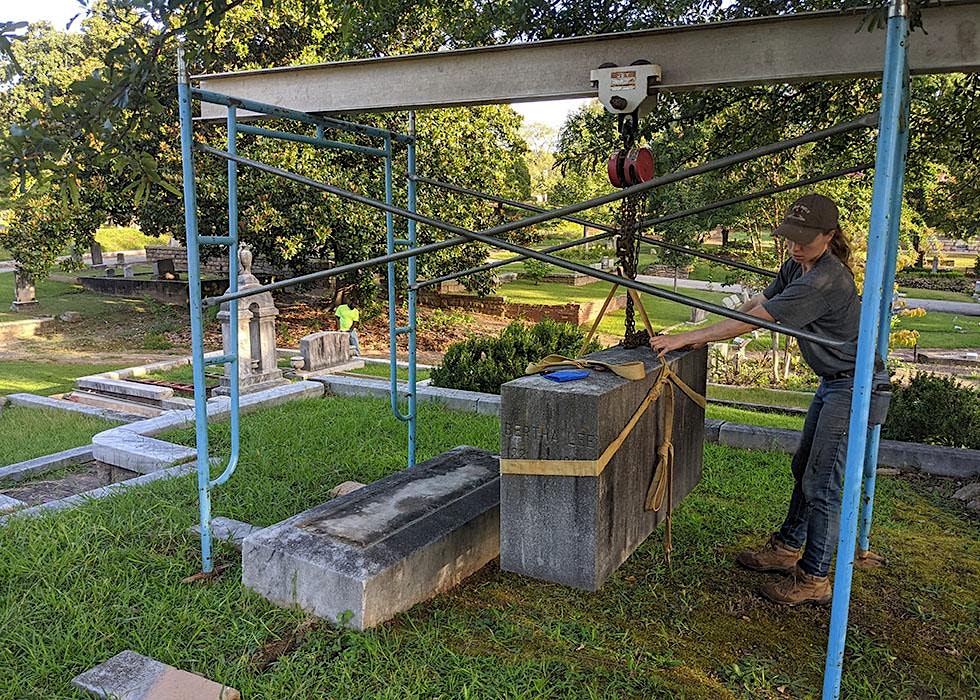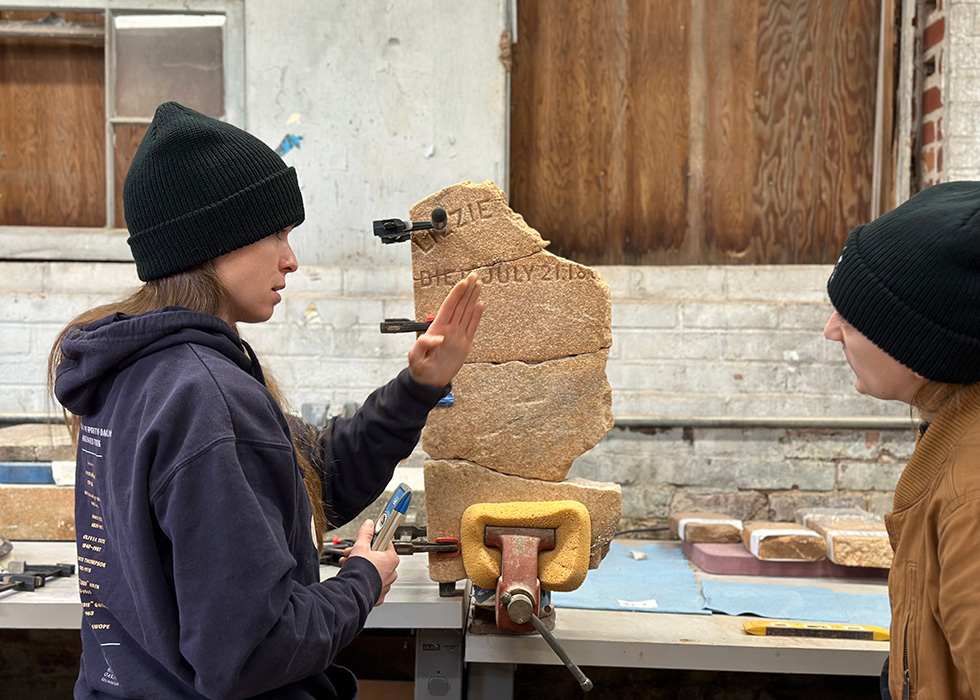
Using Lead in Cemetery Restoration
For as long as it has been dangerous, lead has also been incredibly useful. Some historians refer to it as the ancient equivalent of plastic: impossible to live without, but also not that healthy for us. Lead was a popular metal in ancient times because its low melting point and high flexibility allowed people to mold it into endless shapes. While lead has countless uses historically, I’ll focus here on its uses in sculpture and monument construction.
The most abundant use for lead in monument construction is when pinning two pieces of stone together, such as pieces of a column. The lead is used to line the cavity and secure the iron pin in place while allowing a bit of wiggle room. It could be melted and poured into the sockets. Because that isn’t always feasible, it could also be molded and pressed into the sockets. More recently, you can find lead helping to hold hinges in place on large stone doors.
A second use for lead is to line the joints between pieces of a monument. This type of lead is referred to as wedge lead. Wedge lead works similarly to a mortar joint and creates an even joint profile, although it is not completely waterproof since lead and stone don’t bond to one another. Because pure lead can tarnish and stain a monument’s surface, monument setters created different mixtures to create a tinted lead that was more attractive. For example, the following excerpt was taken from the 1919 Monument Dealer’s Manual:
“The recipe we use for putty to set monuments is as follows: One part of dry white lead to two parts of clean, finely screened granite dusts (Barre). Mix well, dry, then add copal varnish until a thick putty is formed, mixing with hands the same as kneading bread. Roll out into rolls about the thickness of little finger, place around the edge of monument and set stone on top, then cut the edge with a sharp knife. If round or bead joint is required, use common tuckpointing tool. This putty can be colored to any shade of granite by using dry coloring.”
Though less common, another interesting and effective use for lead is in the capping of monuments (see feature photo), primarily in cemeteries where sedimentary stones like slate and brownstone were the primary source of headstone material. Because the nature of their formation means these stones have distinct layers (called bedding planes), and because they are almost always set upright with their bedding planes vertical, water easily penetrates from the top and causes layers to delaminate. A lead cap acts like a miniature roof to protect water from entering the top of the stone. Unfortunately, lead also attracts rodents because of its sweet taste, so these caps can sometimes be gnawed away over time.
Lead is everywhere in a cemetery. You just have to know where to look. At Oakland, the preservation team often finds it surrounding the pins that hold monument pieces together and in the hinges that secure mausoleum doors. We use lead in the restoration process when re-setting monuments that have uneven surfaces because lead helps cushion the joint and level the stones out. For safety reasons, we do not work with molten lead or other forms that could be breathed in or ingested.



